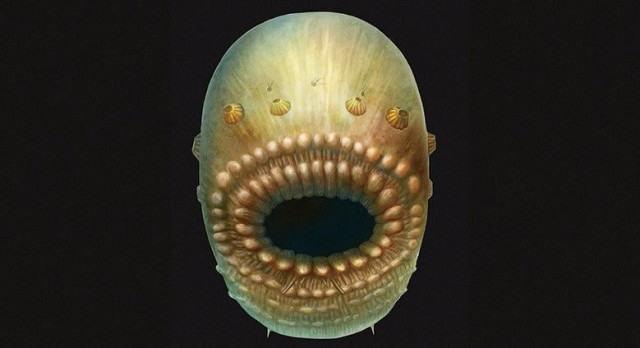Your oldest ancestor was really weird and had a big mouth
Saccorhytus appears to be the most primitive member of the broad animal group called deuterostomes

Saccorhytus, measuring about four-hundredths of an inch (1 millimeter), appears to be the most primitive member of the broad animal group called deuterostomes.ILLUSTRATION COURTESY: REUTERS
Scientists on Monday said a tiny marine creature from China that wriggled in the seabed mud about 540 million years ago may be the earliest-known animal in the lengthy evolutionary path that eventually led to humans. It was a weird-looking beastie with a bag-like body and, for its size, a really big mouth.
University of Cambridge paleontologist Simon Conway Morris noted that humans, who appeared a relatively recent 200,000 years ago, have a series of "evolutionarily deeper ancestors" than monkeys and apes. That point is exemplified by the unique-looking creature called Saccorhytus, whose name means wrinkled sack.
Monochrome art: Exploring the inner depths of the human psyche
"And is not beauty in the eye of the beholder?" Conway Morris asked.
Saccorhytus, measuring about four-hundredths of an inch (1 millimeter), appears to be the most primitive member of the broad animal group called deuterostomes.
This group includes vertebrates - fish, amphibians, reptiles, birds and mammals including people - as well as animals called echinoderms including starfish and sea urchins and obscure creatures called hemichordates including acorn worms.
Saccorhytus lived during the Cambrian Period, a time of exceptional evolutionary experimentation. The primitive biological traits possessed by Saccorhytus helped pave the way for the various deuterostomes including vertebrates. Fish, the vanguard of the vertebrates, appeared roughly 10 to 15 million years after Saccorhytus.
"Saccorhytus now gives us remarkable insights into the very first stages of the evolution of a group that led to the fish, and ultimately, to us," paleontologist Degan Shu of China's Northwest University said in a statement provided by the University of Cambridge.
Fossils of about 40 Saccorhytus individuals, including a few superbly preserved specimens, were unearthed in Shaanxi Province in central China and look like miniscule black grains.
Saccorhytus probably lived between individual grains of sediment on the bottom of a shallow sea.
With its large mouth, it probably ate by simply engulfing food particles or smaller creatures whole. The researchers found no evidence that it had an anus, meaning that its waste material may have been expelled out of the mouth. Conway Morris said that process "from our perspective sounds rather unappealing."
It also boasted small conical structures on its body, which was covered with a thin, flexible skin. These structures may have allowed water it swallowed to escape, possibly the evolutionary forerunner of fish gills.
The research was published in the journal Nature.



















COMMENTS
Comments are moderated and generally will be posted if they are on-topic and not abusive.
For more information, please see our Comments FAQ